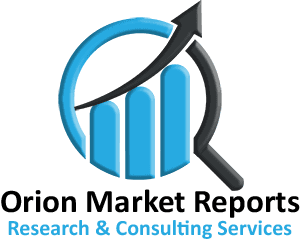Global Growth Hormone Drugs Market Size, Share and Trends Analysis Report, By Drug Type (Somatropin, Tesamorelin, and Others), By Application (Growth Hormone Deficiency, Turner Syndrome, Idiopathic Shorts Status (ISS), Prader-Willi Syndrome (PWS), and Others), By Distribution Channel (Hospital Pharmacies, Online Pharmacies, and Retail Drug Stores), Forecast (2022-2028)
The global growth hormone drugs market is anticipated to grow at a considerable CAGR of 6.4% during the forecast period (2022-2028). Growth hormone drugs are the medication used for the treatment of several hormone-related disorders. The major factor attributing to the growth of the global growth hormone drugs market is the rising prevalence of adult-onset and childhood-onset growth hormone deficiency across the globe. According to the National Center for Biotechnology Information (NCBI), the prevalence of adult-onset growth hormone deficiency is around one in every 10,000 people and childhood-onset growth hormone deficiency is around 2 to 3 in every 10,000 people globally.
In addition, the rising prevalence of turner syndrome is also driving the demand for growth hormone drugs. According to the National Organization for Rare Disorders (NORD), around 1 in every 2000 to 2500 female birth are affected by heat turner syndrome. is the organization had also estimated that there are more than 70,000 females having turner syndrome in the US alone. Furthermore, the rising prevalence of Prader-Willi syndrome, a type of rare genetic disorder is also fueling the demand for growth hormone drugs. According to NCBI, around 10,000 to 20,000 living individuals including males and females equally are affected by the Prader-Willi syndrome in the US alone.
Some of the major players in the market include Teva Pharmaceuticals Industries Ltd., Eli Lilly & Co., Novartis International AG, Merck Group, and Novo Nordisk A/S, among others. These market players are also contributing significantly to the growth of the market by adopting various strategies including mergers and acquisitions, geographical expansion, partnerships, new product launches, and collaborations, to stay competitive in the market. For instance, in October 2021, Ascendis Pharma A/S got approval from the US Food and Drug Administration (FDA) for the commercialization of “Skytrofa”, a lonapegsomatropin-tcgd drug. Skytrofa is used once a week for the treatment of growth hormone deficiency in pediatric patients. Similarly, in February 2022, Pfizer Inc. and Opko Health, Inc. got authorization from the European Commission for the marketing of “Ngenla”. It is the next-gen long-lasting human growth hormone drug-containing somatrogon and can be used once a week in injection form to treat the growth disturbances due to insufficient secretion of growth hormone in children and adolescents of age 3 years and above.
Market Coverage
The market number available for – 2021-2028
Base year- 2021
Forecast period- 2022-2028
Segment Covered-
By Drug Type
By Application
By Distribution Channel
Regions Covered-
North America
Europe
Asia-Pacific
Rest of the World
Competitive Landscape-
Teva Pharmaceuticals Industries Ltd., Eli Lilly & Co., Novartis International AG, Merck Group, and Novo Nordisk A/S, among others.
Key questions addressed by the report
What is the market growth rate?
Which segment and region dominate the market in the base year?
Which segment and region will project the fastest growth in the market?
How has COVID-19 impacted the market?
Deviation from the pre-COVID-19 forecast
Most affected region and segment
Who is the leader in the market?
How players are addressing challenges to sustain growth?
Where is the investment opportunity?
Global Growth Hormone Drugs Market Report by Segment
By Drug Type
Somatropin
Tesamorelin
Others
By Application
Growth Hormone Deficiency
Turner syndrome
Idiopathic Short Status (ISS)
Prader-Willi Syndrome (PWS)
Others
By Distribution Channel
Hospital Pharmacies
Online Pharmacies
Retail Drug Stores
The report will be delivered within 48-72 hours after payment confirmation
